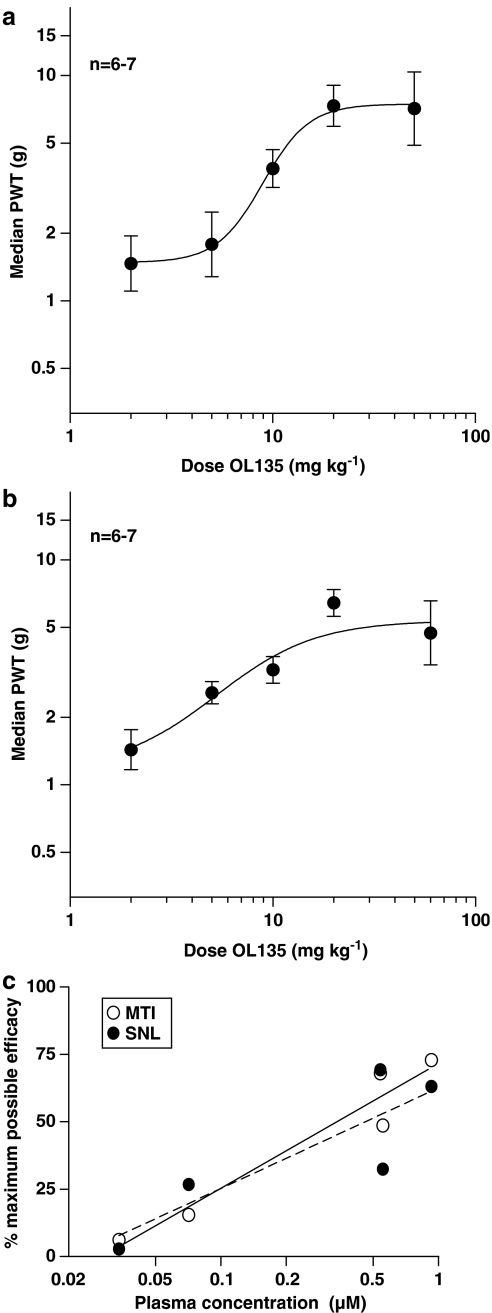Figure 6.
OL135 reverses mechanical allodynia in a dose-dependent manner. (a) Rats subjected to MTI were given 2, 5, 10, 20, and 50 mg kg−1 OL135 and their allodynic thresholds at 30 min were analysed by nonlinear regression. (b) Rats subjected to SNL were dosed with 2, 5, 10, 20, and 50 mg kg−1 OL135 and their allodynic thresholds at 30 min were analysed by nonlinear regression. (c) The plasma concentration of OL135 at 30 min achieved by doses of 2, 5, 10, 20, and 50 mg kg−1 were determined in cohort rats and correlated with efficacy in the MTI and SNL models. For comparison between the two models, the median PWTs were normalised to generate a percent maximum possible efficacy (MPE) value using the following transformation: %MPE=(PWT(t)−PWT(baseline))/[PWT(pre)−PWT(baseline)), where PWT(t)=PWT at time t post-treatment, PWT(baseline)=PWT at baseline, and PWT(pre)=PWT of naïve rats prior to initiation of pain model; r=0.97 for MTI and 0.86 for SNL.

